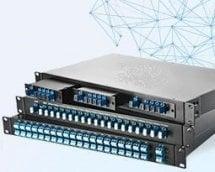Exploring the Role of Optical Switch in Next-Generation Fiber Patch Cable Networks

Introduction to the Growing Demand for Optical Switching
In the fast-evolving world of digital connectivity, the need for high-speed, low-latency, and energy-efficient communication systems is higher than ever. Optical switching technology, alongside supporting components like the fiber patch cable, has emerged as a powerful solution. These switches are transforming data transmission frameworks by offering enhanced routing capabilities with minimal signal degradation. As businesses, governments, and service providers upgrade their networks, understanding this synergy becomes increasingly important.
What Makes Optical Switches Essential in Fiber Optic Systems
An optical switch performs the critical task of directing light signals along specific fiber paths. Unlike electronic switches that require optical-electrical conversions, optical switches maintain the signal in its original light form. This not only conserves energy but also ensures higher speeds and greater fidelity.
For these switches to operate efficiently, they depend on high-quality connections provided by fiber patch cable assemblies. These cables create seamless transitions between switches and end devices, maintaining a clean optical path essential for low-loss signal propagation.
The Fiber Patch Cable and Its Role in Optical Interconnects
A fiber patch cable is a short optical cable that connects various hardware components within a fiber optic system. It links transceivers, patch panels, and switches with minimal signal loss. When used in conjunction with optical switches, these cables offer the flexibility and reliability necessary for advanced network deployments.
The durability and precision of fiber patch cable manufacturing are key to performance. These cables come in various formats and connector types, all designed to interface perfectly with optical switches, ensuring no misalignment or signal distortion during operation.
Use of Optical Switches in Intelligent Data Centers
Modern data centers rely heavily on optical switches to manage traffic across hundreds or thousands of interconnected servers. These switches work in tandem with structured fiber patch cable systems to establish highly efficient optical cross-connects. This setup helps balance loads, reroute traffic, and ensure continuity in case of faults.
In dynamic data environments, the ability to quickly switch between multiple fiber paths using optical switches offers a significant operational advantage. The fiber patch cable setup in such facilities often uses color coding and labeling for ease of management and quick reconfiguration.
Benefits of Integrating Fiber Patch Cable With Optical Switches
The integration of optical switches with fiber patch cable networks yields numerous advantages. It ensures lower latency by eliminating unnecessary conversions. Signal degradation is minimized due to cleaner optical paths. In addition, the physical modularity provided by the cables allows for flexible network upgrades.
Another key benefit is scalability. As new switches or routers are added, fiber patch cable connections allow seamless expansion without disrupting existing configurations. This modularity supports growth without significant redesigns or capital expenditure.
Deployment Challenges and Solutions in Optical Switch Installations
Despite their advantages, optical switch systems can face challenges such as alignment issues, port limitations, or high insertion losses if improperly configured. Choosing the right fiber patch cable is crucial to mitigating these problems. High-quality cables with precise connector polish and core alignment reduce errors and ensure stable operation.
Another challenge is cable management. As networks expand, poor organization can lead to entanglements or even fiber breakage. Implementing structured cabling using fiber patch cable trays, labels, and routing pathways helps maintain the integrity and ease of operation.
Technological Innovations Driving Optical Switching Systems
The evolution of optical switches includes developments in MEMS-based architectures, nanophotonic systems, and wavelength-selective switching. These advances support higher port counts, faster switching times, and reduced footprint. Simultaneously, fiber patch cable technology has kept pace with low-loss connectors, armored jacket designs, and environmentally hardened cables for outdoor deployments.
This continuous innovation is enabling industries to deploy optical switches not just in core networks, but also in access networks, FTTx installations, and edge computing environments. Fiber patch cable systems remain the primary medium to interconnect these increasingly distributed networks.
Use Cases Beyond Telecommunications
Beyond telecom and data centers, optical switches combined with fiber patch cable infrastructure are finding use in areas like broadcasting, defense communications, and healthcare. In video transmission studios, rapid switching between multiple video sources is possible using these technologies. In medical imaging and diagnostics, optical switches offer real-time data routing over stable fiber patch cable lines.
This cross-sector adaptability showcases the versatility and reliability of combining optical switching with fiber patch cable configurations.
Conclusion
As networks move toward greater automation, speed, and bandwidth, the role of optical switches will continue to expand. Their success, however, relies heavily on the performance of accompanying fiber patch cable systems. The combination of these two technologies delivers a future-proof, reliable, and scalable solution for a wide range of industries. Organizations looking to modernize their infrastructure must invest in both components equally to harness the full potential of optical networking.








